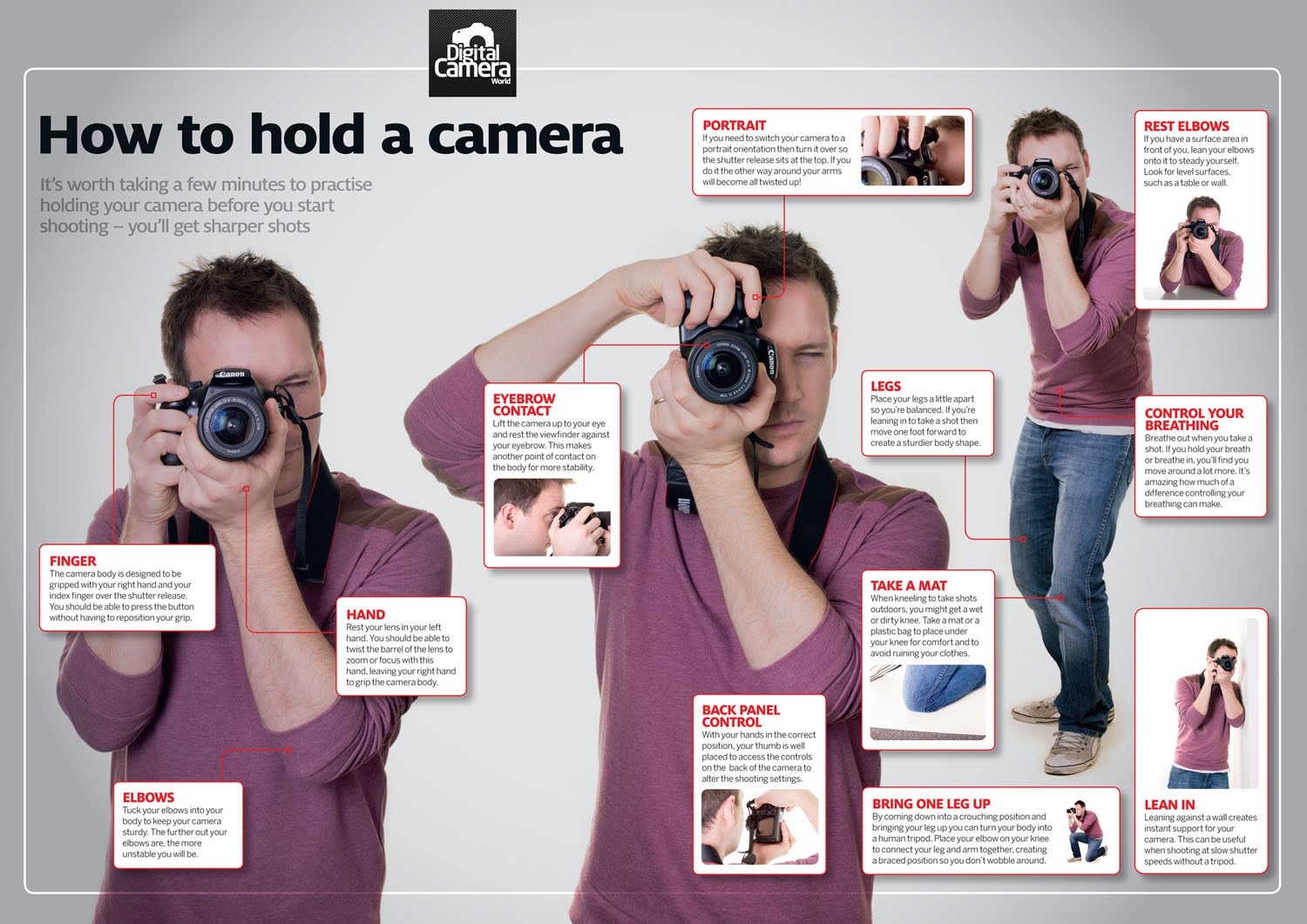Photography cheat sheet: How to hold your camera properly
Holding your camera the right way is vital for comfortable shooting and sharp images

It's a good idea to think about how you hold your camera if you want to shoot comfortably and end up with the sharpest images possible.
You may think the way to hold it is obvious, and for everyday shooting, there's a good chance you're doing nothing wrong. Nevertheless, there are a few things you may not have considered that can help you to shoot that little bit better, particularly in colder conditions or when you need to rely on slower shutter speeds.
Whether you've got one of the best cameras for professionals or for beginners, there are some ‘rules’ for the best way to hold your camera, but everyone is slightly different, so use this as a guide, and if it doesn’t feel comfortable, try slightly varying the position of your hands, arms, or feet, until you find the most comfortable position.
How should you hold a camera?
How you hold a camera depends on the type of camera you're using – and in the case of interchangeable-lens cameras, the lenses you use too. Here, we're assuming you're using a standard DSLR or mirrorless camera with a conventional autofocus lens, such as the 18-55mm type that would typically come with the camera.
First, you should think about whether you can operate it comfortably in the way that you need to. You shouldn't need to keep repositioning your right hand every time you want to capture an image, as you should just be able to move your fingers to regulate controls. The zoom ring on your lens should also be within easy reach of your thumb and finger.
It's possible that the position of your legs and feet may also not provide you with the best support, particularly when standing for extended periods of time. Moving one leg slightly in front of the other, rather than having both feet right next to each other, may help you to be more stable.
You should also pay attention to where your camera is relative to your face. You may be simply bringing the camera close to your eye, but moving it back so that your viewfinder's eyecup rests against your eyebrow will provide an additional contact point for greater stability. Tucking your elbows into your body can also help to keep you steady.
The best camera deals, reviews, product advice, and unmissable photography news, direct to your inbox!
Sometimes you may need to get extra stable for those situations when you don't have a tripod. Here, you can kneel on one knee and rest your elbow on the other one, essentially turning your body into a tripod. This will also give you extra stability than if you were to just kneel on both knees.
You can also use a mat if it's more comfortable. This doesn't need to be anything special or particularly large; you may already own one that would be perfectly suitable, such as a garden kneeling pad.
Photography cheat sheet: how to hold a camera
You might like the rest of our photography cheat sheets and photography tips
The former editor of Digital Camera World, "Matt G" has spent the bulk of his career working in or reporting on the photographic industry. For two and a half years he worked in the trade side of the business with Jessops and Wex, serving as content marketing manager for the latter.
Switching streams he also spent five years as a journalist, where he served as technical writer and technical editor for What Digital Camera before joining DCW, taking on assignments as a freelance writer and photographer in his own right. He currently works for SmartFrame, a specialist in image-streaming technology and protection.


